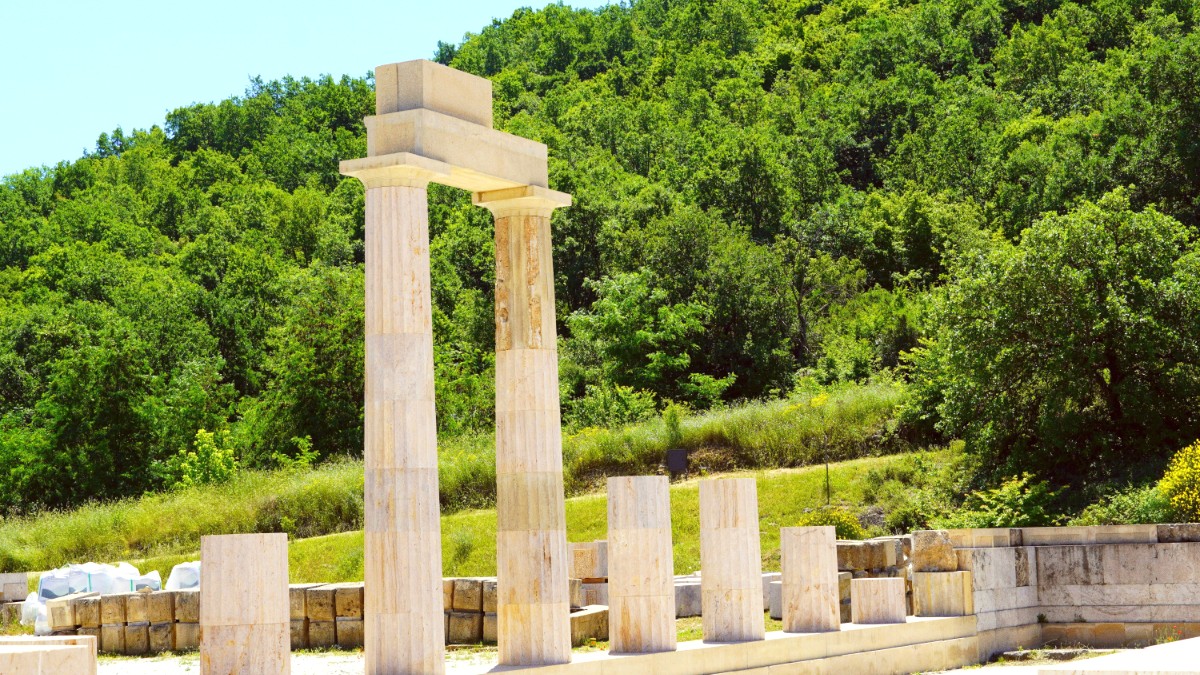
Greece
The White Tower, Arch of Galerius, and Rotunda are central to Thessaloniki's identity. Ancient Aigai and Pella hold vast significance as the original heartland of Alexander the Great's kingdom.
These sites offer deep insights into the region's multi-layered past, from Roman glory to Ottoman rule and Byzantine splendor.
The Arch is always accessible. Rotunda hours vary seasonally, entrance fee approximately €6.
First capital of Macedon, UNESCO site. Famous for Royal Tombs, including Philip II's tomb. Approx. 1-hour drive from Thessaloniki. Entrance €12. Allow 2-3 hours.
Birthplace of Alexander the Great, later capital of Macedon. Features impressive mosaic floors from ancient villas. Approx. 45-minute drive from Thessaloniki. Entrance €10.
The Aigai museum is underground, directly over the tombs. Pella Museum houses stunning pebble mosaics. Combine visits for a full day of Macedonian history.
Both Aigai and Pella are UNESCO World Heritage sites, reflecting their profound historical significance.
Sites and museums generally open daily (closed Tuesdays), hours vary seasonally.
Explore the rich history and art of Greek Macedonia through its museums.
Houses artifacts from prehistoric to Roman periods, providing an overview of the region's ancient past.
Dedicated to Byzantine art and history, exhibits icons, mosaics, frescoes, and everyday items.
Documents the history of the Sephardic Jewish community in the city, once a major center of Jewish life.
The birthplace of Mustafa Kemal Atatürk, founder of modern Turkey, offering a glimpse into his early life.
Features works by Greek and international artists, demonstrating modern and contemporary artistic expressions.
Check individual museum websites for current opening hours, ticket prices, and special exhibitions before your visit.
Extensive sections of the city walls, well-preserved in Ano Poli, provide insight into Thessaloniki's defensive history. Walk along parts for unique city perspectives.
Numerous churches demonstrate stunning mosaics and frescoes. The Church of Hagia Sophia and Church of Agios Dimitrios with its crypt are examples.
Remnants of the ancient Roman administrative and social center of Thessaloniki. The site includes a theatre/odeum and various civic structures.
Greek Macedonia has many historical sites, each telling a piece of its layered past.
Beyond history, Greek Macedonia offers stunning natural landscapes, from mythical mountains to pristine beaches and wetlands. These natural spaces invite exploration and discovery for every type of traveler.
The region boasts diverse ecosystems, supporting rich biodiversity and providing opportunities for outdoor activities and serene escapes.
Greece's highest mountain and the mythical home of the gods. Diverse ecosystems, from dense forests to alpine meadows. Numerous hiking trails for various experience levels.
Famous for pristine beaches, clear turquoise waters, and pine forests. Kassandra offers lively beaches. Sithonia provides a more natural and tranquil experience.
High-altitude lakes shared with Albania and North Macedonia. Important wetlands, hosting diverse birdlife, including the rare Dalmatian pelican. Serene traditional villages surround them.
A protected wetland and Ramsar site in Serres, known as an important bird sanctuary. Famous for its large population of water buffalo.
Boat tours and birdwatching here.Mainly in Epirus, borders West Macedonia. Features dramatic landscapes, including the deep Vikos Gorge, one of the deepest canyons globally.
Hiking and nature experiences.Located in the city of Edessa, these impressive waterfalls are an unique natural urban phenomenon, featuring a lush park and viewing platforms.
Visit Edessa.One of Europe's largest river caves, located near Drama. Explore its fascinating underground formations and the river that flows through it.
Discover Drama region.A wetland west of Thessaloniki, forming a complex delta. Home to diverse bird species, including flamingos, and provides opportunities for birdwatching.
Nature exploration.Explore the famous three "legs" of Chalkidiki, each offering a distinct experience for beach lovers and nature enthusiasts.
The national parks in Greek Macedonia are sanctuaries for wildlife and offer breathtaking landscapes.
Many archaeological sites and museums close on Tuesdays. Confirm opening hours before your visit, especially during national holidays.
Consider purchasing combination tickets for multiple sites if available to save on entrance fees. Comfortable walking shoes are essential for exploring historic sites and natural parks.
Seek out less-visited but equally rewarding spots to uncover unique cultural and natural beauty.
Discover the tranquil beauty and traditional architecture of these hidden mountain retreats.
Explore picturesque lakeside cities and villages that offer both natural beauty and cultural depth.
Discover more untouched locales that showcase Greek Macedonia's diverse appeal.
These sites offer unique perspectives beyond mainstream tourism, providing a connection to the region's diverse heritage.
Stroll through villages that preserve traditional charm and local life.
These destinations provide opportunities for authentic cultural interaction and a break from crowded tourist paths.
Uncover less-known historical sites that offer tranquility and insights into the past.
These sites are off the main tourist circuit, offering peaceful exploration and historical discovery.
Consider hiring a local guide for insights into the history and culture of less-known areas. They can share unique stories and local perspectives.
A rental car is highly recommended for exploring hidden gems, as public transport access to these locations can be limited. This offers flexibility in your itinerary.
When visiting smaller villages or religious sites, dress respectfully and be mindful of local traditions. A polite approach opens doors to genuine interactions.